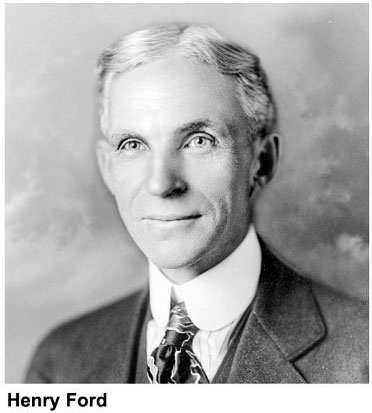
No questions asked
IG Chowdhury | Saturday, 12 October 2024

 With so many changes happening around us the term change is almost a fad in life today. I have an amusing incident from my school days about my first experience with changes. Not being different from other scruffy members of my age group, cleanliness was not a part of my daily habit. Very often I would miss the shower or brush the teeth before the school. One day my teacher caught me lying but could not prove. I would not admit either. In desperation he offered me a bait. 'OK I know you are lying. Admit and I promise not to hit you with the ruler or make you write ten pages. Being naive as I was in those green days of life, I admitted after having won the reprieve. But at the end I made the grievous mistake of putting up a nervous giggle. Immediately the ruler came down on me with the usual ferocity. No, not for lying but for giggling shamelessly after having lied. So much for honesty! The progression of time has taken away many privileges of teachers such as mutilating their pupil. Thank goodness! Many other areas of life have also been affected in a similar manner such as smoking in the open.
With so many changes happening around us the term change is almost a fad in life today. I have an amusing incident from my school days about my first experience with changes. Not being different from other scruffy members of my age group, cleanliness was not a part of my daily habit. Very often I would miss the shower or brush the teeth before the school. One day my teacher caught me lying but could not prove. I would not admit either. In desperation he offered me a bait. 'OK I know you are lying. Admit and I promise not to hit you with the ruler or make you write ten pages. Being naive as I was in those green days of life, I admitted after having won the reprieve. But at the end I made the grievous mistake of putting up a nervous giggle. Immediately the ruler came down on me with the usual ferocity. No, not for lying but for giggling shamelessly after having lied. So much for honesty! The progression of time has taken away many privileges of teachers such as mutilating their pupil. Thank goodness! Many other areas of life have also been affected in a similar manner such as smoking in the open.
'If it ain't broke don't fix it' was a maxim of early twentieth century. Much has changed since those days. The new rule at the dawn of new century is to fix it at regular intervals of time. That is maintenance. Almost a U turn! In the earlier days it was not uncommon for people to buy squeezer to drain the last drop out of a toothpaste tube. Akio Morita of Sony has an amusing story in his biography. Much effort was needed to persuade a friend in New York to dispose of the pile of Sunday newspapers. His friend did not have the heart to throw away the thick pile in the bin. Recycling was a much later development.
Crossing the bridge between the two periods of time has not been easy for those of us who have been active in both the periods. An assignment in my graduate studies in a business class rings a bell. We, a group of three members, had to do a project on preparing a schedule for changing streetlights in the neighbourhood. Three options were considered as follows; one: to replace all bulbs at regular intervals as per expected duration of bulbs, two: to replace all when a predetermined number of bulbs had failed and, three: to replace a bulb as it failed. The option two was found to be the best considering related costs in changing bulbs such as using a fork lift vehicle. The overall cost had to be equated, combined piece by piece.
Optimization as an academic subject was a craze in the seventies. An optimal solution is the best solution among the available alternatives. Not easy to attain when the alternatives are many. Even ten alternatives can lead to over a million options. Finding the best would require examining all the options before the best was found. With the newly attained computer power it was assumed that any such problem could be optimally solved. It did not take long for the reality to sink in. The complexity of a problem was seen to rise astronomically as options were added, one by one. Optimal solution of a problem having fifteen choices was an impossible task, not to speak of the game of chess having sixty-four options. One did not have to cross the sky to find an insane number for impossibility. Infinity was a finite number when related to the ability of search against given time. The distance of the nearest star is infinity when considered against the ability to reach there. Finding a solution as good as possible was the new optimality. That was called a satisfying solution. That is akin to Alibaba's behaviour in the den of robbers as opposed to his brother, who wanted it all.
It is not long ago when bought things found defective were not easy to get refunded or even replaced. Today that is easily done in most countries. Businesses promote their sales with the catchword 'exchange or refund will not incur questions'. The bottom line is the competition. Back at the beginning of the past century Henry Ford declared that he had democratized automobiles. Applying better methods, he was able to reduce the price to such a level that even the wage earners could afford to buy one. That is democratization as more people could buy the product. Consequently, the volume of business increased many times and the number of items made to sell rose from thousands to millions to billions.
Yes, the number of produced items went up enormously. What about the Quality? As the volume rose there was an accompanying concern for quality of items produced. In the earlier days the process of quality management was driven by a tenet that defects were part of the system. As things were made a few of them were bound to fail in meeting the quality specification. Or else the cost of production would rise challenging the 'democratization' process. The good quality management was to have a system that would take care of undesirable defects through easy replacement. Three-sigma was the golden rule of quality management that would allow up to twenty-seven defects in a thousand made. The method incurred random inspection on the finished products besides normal checks at each stage of the process of production. Three-sigma process became inadequate as the volume of production went up. The sigma level was increased to six, even seven. Yet defects remained, however small. An overhaul of the system was required. The concept of built-in quality was born. That was the Kanban system replacing the push method of the time. The Japanese companies were the driver of this overhaul.
And then there was the Push and Pull system of an assembly line where output of one worker was input of another, as things were made. Not so easy to balance when the rate of one worker was faster than another. The situation was epitomized by Charlie Chaplin's immortal film 'Modern Times'. Since then, there has been dramatic reversal of the processes. Toyota introduced the Just in Time (JIT) methodology with the Push replaced by the Pull. Another such revolutionary concept was the Zero Inventory Size replacing the traditional lot sizes. Toyota was known to have learnt the methods for producing cars at the Ford factory in Detroit. Less than half a century later there was a dramatic reversal as Toyota's innovative methods overturned the then methods of Ford. This was a 180-degree reversal. Changes, as they happen, can change sides.
chowdhury.igc@gmail.com